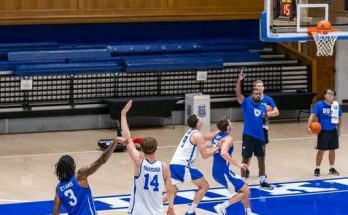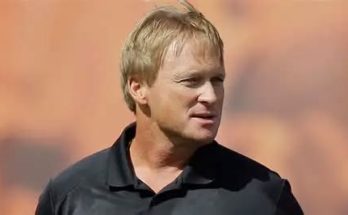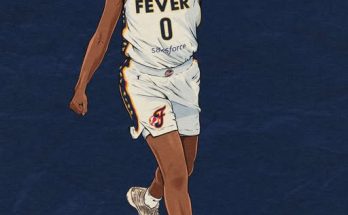The NHL offseason never truly sleeps, and as front offices across the league crunch numbers and forecast cap flexibility, whispers of opportunity grow louder in the corridors of contention. One such whisper has turned into a low hum around the New York Rangers, who are reportedly monitoring the situation unfolding in Dallas involving rising star Jason Robertson. While the Stars find themselves in a financial squeeze, the Rangers—never shy about taking big swings when the moment presents itself—are quietly gauging whether this could be the perfect moment to make an aggressive move that could reshape their offensive core for years to come.
Robertson, a 24-year-old winger who has become the backbone of the Stars’ offensive firepower, is entering the second half of a four-year, \$31 million contract. While he remains under team control for two more seasons, the Stars’ financial future is becoming increasingly uncertain. Dallas has significant money tied up in long-term deals for veterans like Tyler Seguin, Jamie Benn, and Miro Heiskanen, and with Wyatt Johnston and Thomas Harley due for major extensions soon, the path forward grows narrower. Although Robertson is still performing at an elite level, registering multiple 40+ goal campaigns and serving as the Stars’ most consistent scorer in high-stakes moments, the harsh reality of the NHL’s hard cap looms large.
That’s where the Rangers come in.
New York, after reloading its coaching staff under Peter Laviolette and building around a maturing core led by Igor Shesterkin, Adam Fox, and Artemi Panarin, is in win-now mode. Last season’s playoff disappointment served as both a motivator and a reminder that adding the right piece could elevate this team from contender to favorite. While their top-six forwards are productive, the Rangers’ scoring can go quiet at critical times, particularly during the grind of postseason hockey. Robertson could be the antidote—an elite, playoff-ready scorer with a lethal shot, high hockey IQ, and youth still on his side.
Internally, the Rangers have begun exploring all possible avenues to acquire Robertson if Dallas even flinches at the idea of moving him. While no official trade discussions have been reported, front offices don’t wait for phone calls—they prepare. And the Rangers are preparing.
The strategy would not be simple. New York, while not in cap hell, doesn’t have unrestricted financial freedom. Any acquisition of Robertson would require careful maneuvering, likely involving moving at least one core player and/or several contracts. However, the team has several attractive assets that could help make a deal work, both in terms of value and cap relief. Former first-rounders like Kaapo Kakko or Alexis Lafrenière, who have shown flashes but haven’t yet hit their ceilings, could be appealing to Dallas if they seek controllable, high-upside talent. Additionally, New York owns all of its first-round picks and has a few prospects that could sweeten any potential package.
From Dallas’ side, moving Robertson would be a nightmare scenario—but also potentially a financial lifeline. While trading away their best offensive weapon would be a hard pill to swallow, the team is approaching an inflection point. Robertson’s cap hit of \$7.75 million is a bargain now, but with Johnston and Harley potentially earning long-term deals in the \$6-8 million range, the Stars’ flexibility will vanish without tough decisions. If they believe that sustaining a deeper, more balanced lineup is the key to competing with the likes of Colorado and Edmonton, then sacrificing one star to maintain three or four other pieces may become the reluctant path forward.
What complicates matters is Robertson’s escalating leverage. Though he’s not due for unrestricted free agency until 2027, he has already outperformed his current deal, and if the Stars aren’t willing to extend him early or offer a long-term raise, things could sour. A trade wouldn’t just be about shedding salary—it could be about preemptively avoiding a contract standoff in 2026 or 2027. The NHL has seen similar cases before, where a team opts to trade a player one or two years before free agency to maximize return and avoid drama. Matthew Tkachuk’s departure from Calgary comes to mind.
The Rangers would obviously need to act aggressively but intelligently. Jason Robertson isn’t the type of player who becomes available often, and acquiring him would signal a seismic shift in New York’s trajectory. They would not only be adding a top-tier scorer but also staking their future on a core that includes young, dynamic offensive talent alongside established veterans. Pairing Robertson with Panarin or giving him a center like Mika Zibanejad could create one of the league’s most dangerous lines. It would also relieve pressure from Chris Kreider and Vincent Trocheck, allowing for more tactical flexibility and lineup balance.
Moreover, there’s a cultural fit. Robertson’s calm, thoughtful demeanor would blend well with the Rangers’ locker room. He’s not flashy off the ice, but he plays a brand of hockey that’s modern and effective—fast, intelligent, and ruthless in front of the net. In the pressure cooker of New York, where expectations are sky-high and media scrutiny is relentless, Robertson’s temperament could be an asset.
Timing, of course, is everything. The Rangers aren’t in a rush, nor are the Stars dangling Robertson. But opportunity often comes dressed in silence. If Dallas hits an impasse in negotiations with their young players or decides that a reallocation of cap space is the only way to remain competitive, the phones will ring. And if they do, the Rangers want to be first in line.
The next few months will be telling. The NHL’s calendar slows down post-free agency, but the groundwork for blockbuster trades is often laid during the dog days of August. The Rangers’ front office, led by GM Chris Drury, has shown an appetite for boldness before. Whether it was trading for Vladimir Tarasenko or signing Blake Wheeler on the cheap, New York has operated with urgency and conviction in recent seasons. If the right moment arrives, they won’t hesitate.
It also helps that the team’s competitive window is wide open. Igor Shesterkin remains one of the best goalies in the world, Fox is still a Norris-caliber defenseman, and the team has veteran anchors mixed with younger pieces. Adding a premier winger like Robertson would amplify the timeline rather than reset it. That’s a rare luxury in a salary-cap league.
There’s also a league-wide pattern worth noting. With the salary cap projected to rise more steadily over the next several seasons, some teams are trying to get ahead of the curve by locking in talent now. The Rangers could be thinking in those terms—get Robertson now while his price tag is set and plan for an eventual extension when the cap is more forgiving. From an asset management perspective, that’s a forward-thinking strategy.
Still, until something concrete surfaces, it’s all speculative. But NHL history is shaped by moments just like this—when a team with cap issues gets backed into a corner and another with vision, patience, and just enough financial creativity swoops in. If Robertson ever becomes available, expect a dozen teams to make calls. But few, if any, would be as aggressive or as compelling as the Rangers.
The idea of Jason Robertson in blue, gliding across Madison Square Garden ice with fans roaring his name, is tantalizing. It’s the kind of dream that transforms from rumor to reality with a single bold move. And if the Stars can’t find financial balance, and if the Rangers believe they’re one sniper away from lifting the Cup, this could go from pipe dream to power shift faster than anyone expects.



